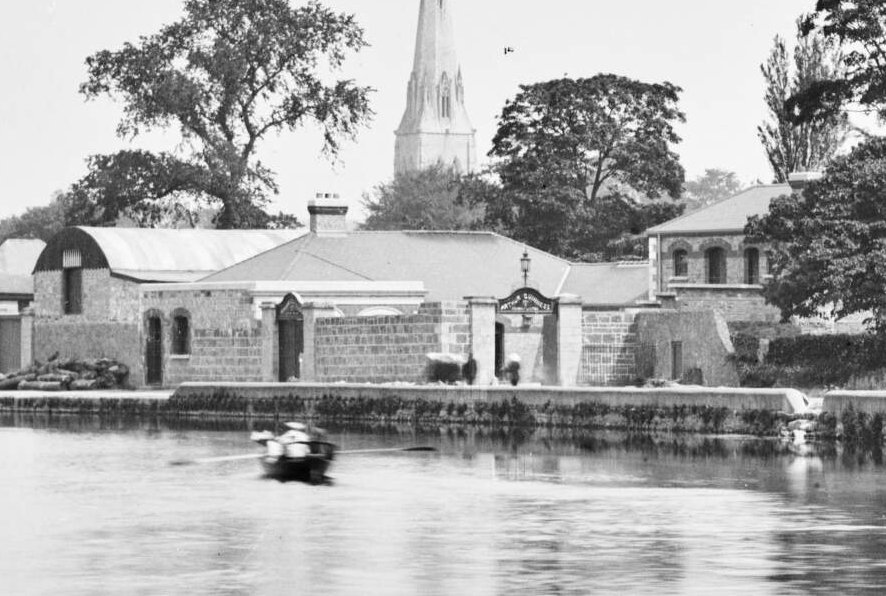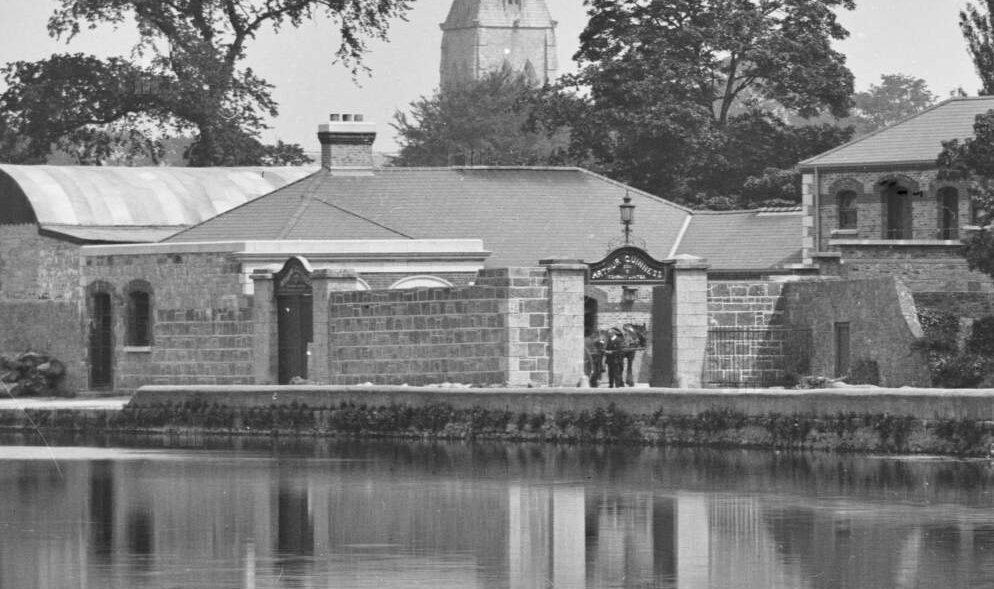Way back in 1799, Saunders's Newsletter carried an advertisement for Carlow Ale, available from Grand Canal Harbour in Dublin for the princely sum of 23 shillings a barrel. As to what type of ale this was we can only speculate, although it's the second time I have come across the words 'Carlow Ale' being used as if it were a specific, local style. The other mention, in a new brewery advertisement in a local paper from 1817 with the phrase 'as it used to be' makes me think that there was perhaps something special about the beer brewed locally in the 18th and early 19th century in Carlow...

Mr. Green's brewery stood on Castle Street in Carlow town and there's a story to be told about it if I ever get my research finished and fill in the blanks in the history of this and the other local breweries. Unfortunately the recipes for the beers these breweries made have long since disappeared so it will be impossible to know with any certainty what it tasted like, although with the county's rich farmland and the noted quality of the malt it produced - and still produces - we can speculate that it was quite good, especially if it warranted shipping to Dublin.
The last brewery appears to have closed in the town in the late 1870s (and strictly speaking that was across the river in Graigue) and for many years after all the beer that was poured in the town was imported from various parts of the country and further afield, although Corcoran & Co conditioned and bottled a few different types for a while in the mid-20th century...
Then along came O'Hara's - Carlow Brewing Company - in 1996 and once more there was a brewery operating in the town, brewing in The Goods Store near the train station. As part of its expansion the brewery moved to Bagenalstown, they added an O'Hara's-centric pub to the Kilkenny bar scene and have since gone from strength to strength - acquiring Craigies Cider and the old Minch-Norton malthouse outside Bagenalstown.

Their latest (joint) venture is a stylish and sleek brewhouse and restaurant in the CHQ Building on Custom House Quay, across the Liffey ([Edit - see comments] and further west) from where Mr. Green was storing his ales 220 odd years ago. His beer came from Carlow via the canal but I arrived on this side of the river via a quicker train and Luas, having been kindly invited to the official opening of Urban Brewing. The entrance to the brewhouse is a little anonymous in a way but that suits the general feeling of classy-chic meets urban-modernity that the ground floor level of the bar exudes. Brick and grey metal combine with the wonderful glass roof hung with Edison-style bulbs to give a stark but comfortable feel. On a gantry above the bar sits the brewhouse where the house beers are made before being dropped to storage tanks downstairs where the beer is then pumped to the taps at the bar.
As well as these in-house beers they also stock the full O'Hara's range from the Carlow brewery, some guest brews and also a huge bottle list - plus cocktails, wine and spirits. Foods run from tapas for those wanting to graze a little, to a full restaurant offerings. (I was very happy to see rabbit on this menu!) We got to sample some tapas including a fantastic swordfish carpaccio and some beautifully cooked prawns from the 23 listed on the interesting tapas menu. The vibe and buzz in the place was great, helped by the army of liggers like me who had turned up, but I could also see myself sitting here - equally happy - on a quiet afternoon with a beer, a book and a bowl of something tasty.

And of course I tried the four here-brewed-beers on offer - Urban Wit is a bog standard Belgian wheat beer, that didn't excite or disappoint; Paradisi, a grapefruit IPA, tasted - well - like grapefruit juice and was a little harsh for my palate, as it's not a style of which I am overly fond; Denali IPA was a strange one ... I thought I had been given the wrong beer, as it tasted very like milder version of O'Hara's Freebird a wheat IPA, but after a brief argument discussion with the barman we decided to agree to disagree about it and I just enjoyed it for what it was ... or what I thought it was.
My favourite was The Forager's Wife, a saison with elderflower. I'm not sure I really picked up the elderflower but I did get a lovely dose of barnyard funk up my nose and a really nice meaty, hop-floral taste that I quite liked.
All the beers were fine really if a little hazy but as it's a pretty new system I think the brewer is still finding his feet with it, as you would expect ... and from what I hear the place is very busy so the beers are not getting much time to rest and condition. I'm certainly looking forward to seeing what's produced over the coming months, and I'm hoping quietly for a brown ale to appear...
It's pretty much impossible to describe in words or show in pictures how wonderful the subterranean part of the brew pub is ... but I'll give it a shot. A gorgeous corridor stretches off into the distance with large alcoves running off from it filled with seating areas, a room for wooden barrels full of sleeping beers, and another full bar. It's all moodily lit with low level strip lighting and uplights showing off the vaulted brick ceiling. It reminded me of somewhere in Belgium or France, or some Kellerbar somewhere in Germany - it really did put a huge smile on my face as I poked around.
As I made my way back up the stairs it struck me that this was a place to be experienced not just visited...
So, it's great to see some Carlow Ale back on the quays of Dublin and I'll be back in Urban Brewing as a paying punter fairly soon. It's a fantastic spot and as I ran off once again to catch yet another stupidly early last train back home, I felt a little pride that maybe Carlow brewing had come almost full circle...
Liam
(Please Note: At the opening all the food and beers were free, although I didn't overdo it. I haven't been paid to write any of this, and as usual I paid for my own train ticket. Yes I live in Carlow, and yes I sort-of-know the O'Hara's - take all of that into account if need be, but remember I am an honest guy!)
The history bit is with thanks to the local studies room, Carlow library.



























